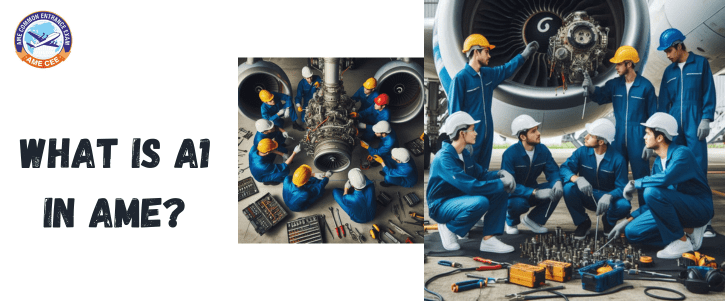A1 License In Aircraft Maintenance Engineering (AME)
The A1 license in Aircraft Maintenance Engineering (AME) is an important certification regulated by the Directorate General of Civil Aircraft (DGCA) in India. This license is essential for professionals who maintain large aircraft, ensuring safety and adherence to Aircraft standards. This guide covers the definition, eligibility requirements, training processes, responsibilities, regulatory framework, career opportunities, and differences from other AME categories as per DGCA guidelines.
Definition and Scope
The A1 license allows for the maintenance and repair of airplanes with a maximum takeoff weight (MTOW) over 5,700 kg (12,566 lbs). This includes various types of aircraft, such as regional jets and large commercial airliners. Key areas covered by the A1 license include:
Airframe Maintenance: Inspecting and repairing the structural parts of an aircraft, like wings and fuselage.
Engine Maintenance: Overseeing the upkeep of jet engines and turboprop engines.
Avionics and Systems: Managing electrical, hydraulic, and mechanical systems in aircraft.
The A1 license ensures that these aircraft are safe, efficient, and compliant with DGCA regulations.
Eligibility Requirements
To qualify for the A1 license, candidates must meet specific criteria:
1. Educational Background: A recognized degree in aeronautical, aerospace, or mechanical engineering, or an equivalent qualification.
2. Experience: A minimum of 2,000 hours of practical experience in aircraft maintenance is required, gained in approved organizations or through structured apprenticeship.
3. Age: Applicants must be at least 18 years old.
4. Examinations: Candidates must pass theoretical and practical exams set by the DGCA, covering various aviation topics.
5. Medical Fitness: A valid Class II medical certificate from a DGCA-approved examiner is needed.
Training and Certification Process
The training process for the A1 license is structured as follows:
1. Theoretical Training: Candidates attend courses at DGCA-approved institutions covering aircraft systems and regulations.
2. Practical Training: Hands-on experience is gained in approved maintenance organizations, working on real aircraft under supervision.
3. Examinations: After training, candidates must pass written and practical exams administered by the DGCA to demonstrate their knowledge and skills.
4. Application: Candidates apply for the A1 license through the DGCA, providing necessary documentation, including proof of training and experience.
5. Continuing Education: License holders must participate in ongoing training to stay updated on technology and regulatory changes.
Key Responsibilities and Duties
Holders of an A1 license have several important responsibilities:
Inspection: Performing thorough inspections of aircraft components to identify issues.
Maintenance and Repair: Carrying out maintenance on airframes, engines, and systems according to guidelines.
Documentation: Keeping accurate records of maintenance activities, crucial for compliance.
Safety Compliance: Ensuring all practices meet DGCA safety standards.
Collaboration: Working with pilots and other technicians to ensure aircraft safety and functionality.
Regulatory Framework
The A1 license is governed by DGCA regulations, specifically the Civil Aviation Requirements (CAR). Key aspects include:
Compliance: Maintenance work must adhere to DGCA standards to ensure safety and quality.
Oversight: The DGCA conducts audits and inspections of maintenance organizations to verify compliance.
Updates: Regulations may change based on industry standards, requiring ongoing education for license holders.
Career Opportunities
A1 license holders have various career options in the aviation industry:
1. Commercial Airlines: Many engineers work for airlines, handling routine maintenance and troubleshooting.
2. MRO Facilities: Maintenance, Repair, and Overhaul organizations hire A1 engineers for aircraft servicing.
3. Government and Military: Government and military aviation also require qualified engineers.
4. Freelance and Consulting: Experienced engineers may work independently, offering specialized services.
5. Career Advancement: With experience, A1 engineers can move into supervisory or specialized roles.
Differences from Other AME Categories
The A1 license differs from other AME categories regulated by the DGCA in several ways:
Aircraft Type: The A1 license is for larger aircraft (MTOW over 5,700 kg), while A2 and A3 focus on lighter aircraft or specific systems.
Scope of Work: Each category has distinct areas of expertise. The A2 license, for example, covers helicopters.
Training and Experience: The A1 license requires more extensive training and experience due to the complexity of larger aircraft.


